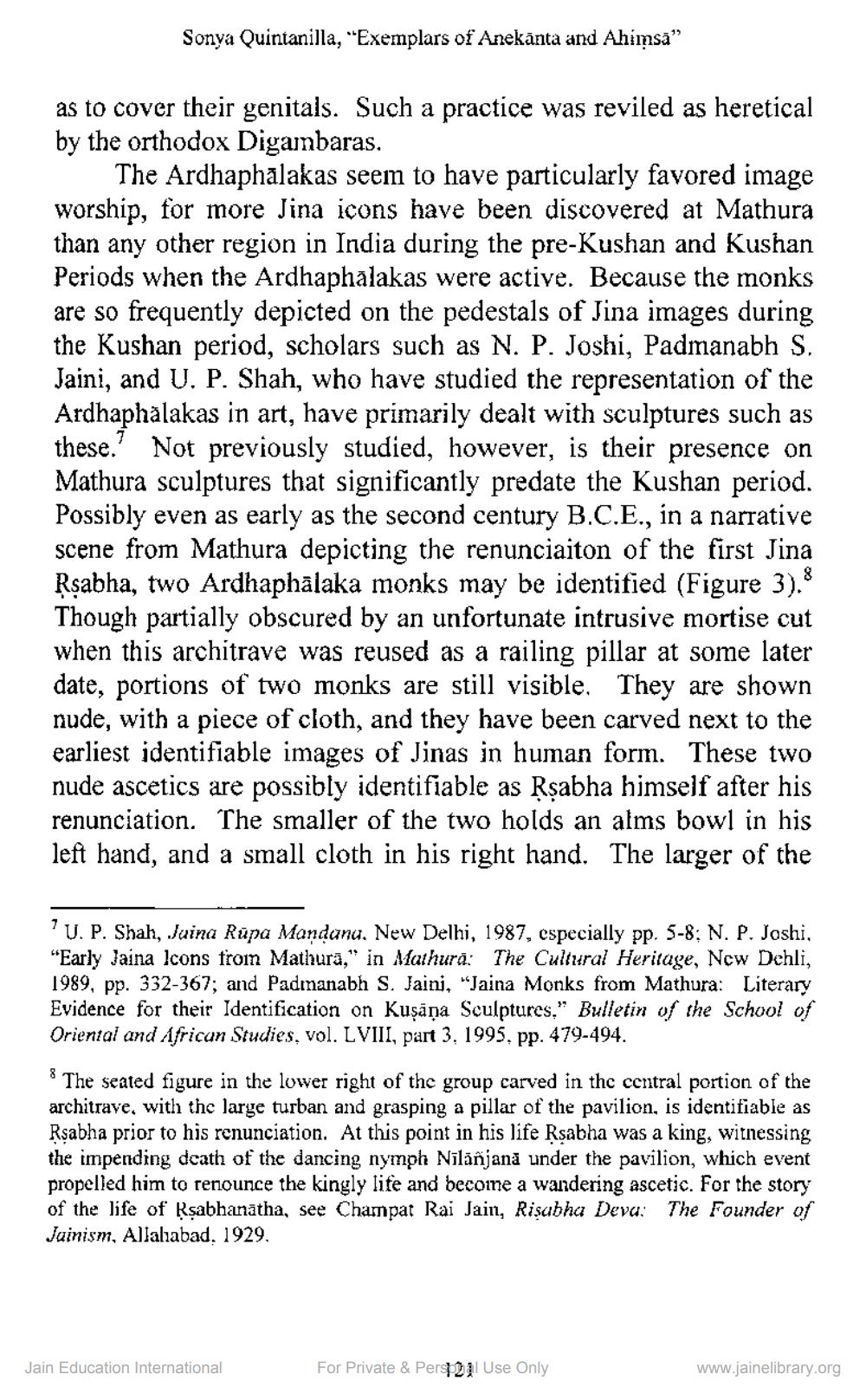________________
Sonya Quintanilla, "Exemplars of Anekānta and Ahimsā”
as to cover their genitals. Such a practice was reviled as heretical by the orthodox Digambaras.
The Ardhaphalakas seem to have particularly favored image worship, for more Jina icons have been discovered at Mathura than any other region in India during the pre-Kushan and Kushan Periods when the Ardhaphalakas were active. Because the monks are so frequently depicted on the pedestals of Jina images during the Kushan period, scholars such as N. P. Joshi, Padmanabh S. Jaini, and U. P. Shah, who have studied the representation of the Ardhaphalakas in art, have primarily dealt with sculptures such as these. Not previously studied, however, is their presence on Mathura sculptures that significantly predate the Kushan period. Possibly even as early as the second century B.C.E., in a narrative scene from Mathura depicting the renunciaiton of the first Jina Rsabha, two Ardhaphālaka monks may be identified (Figure 3). Though partially obscured by an unfortunate intrusive mortise cut when this architrave was reused as a railing pillar at some later date, portions of two monks are still visible. They are shown nude, with a piece of cloth, and they have been carved next to the earliest identifiable images of Jinas in human form. These two nude ascetics are possibly identifiable as Rşabha himself after his renunciation. The smaller of the two holds an alms bowl in his left hand, and a small cloth in his right hand. The larger of the
U. P. Shah, Juina Rupa Mandana, New Delhi, 1987, especially pp. 5-8: N. P. Joshi, "Early Jaina Icons from Mathura," in Mathura: The Cultural Heritage, New Dehli, 1989, pp. 332-367; and Padmanabh S. Jaini, "Jaina Monks from Mathura: Literary Evidence for their Identification on Kuşāna Sculptures." Bulletin of the School of Oriental and African Studies, vol. LVIII, part 3, 1995, pp. 479-494.
The seated figure in the lower right of the group carved in the central portion of the architrave, with the large turban and grasping a pillar of the pavilion, is identifiable as Rsabha prior to his renunciation. At this point in his life Rşabha was a king, witnessing the impending death of the dancing nymph Nīlāñjana under the pavilion, which event propelled him to renounce the kingly life and become a wandering ascetic. For the story of the life of Rsabhanātha, see Champat Rai Jain, Risabha Deva: The Founder of Jainism, Allaliabad. 1929.
Jain Education International
For Private & Pers: 2Use Only
www.jainelibrary.org




